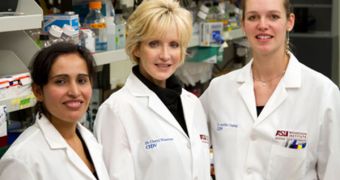Scientists at the Vermont Lung Center and the Arizona State University (ASU) Biodesign Institute are currently working on a new approach for treating emphysema, lung cancer, fibrosis, and other similar pulmonary conditions. Their approach is extremely innovative.
When patients suffer from these conditions, a lung cell transplant is usually their only chance of survival. However, there is a significant shortage of donors, and a high risk of transplant rejection.
If the new investigation were successful, then the joint research team would essentially fix both of these problems at the same time. What investigators are trying to accomplish is create lungs populated by a patient's own lung cells.
This approach needs to be completed in two steps. First, a lung is harvested from a cadaver, and subject to a process called decellularization. As the name indicates, this step implies removing all old cells from the organ, leaving behind only a very fragile “skeleton” – the extracellular matrix.
This structure is made up of elastic support material that keeps the living lung cells in place. Experts are using it as a basis for the new organ. The second step in the process is the harvesting of stem cells from the patient being treated.
At this point, pluripotent and multipotent stem cells are the primary candidates for use in repopulating decellularized lung scaffolds. The team is studying all available options, using a $3.4 million grant secured from the US National Institutes of Health (NIH).
Scientists know that placing stem cells in the scaffolds could result in the formation of the necessary tissues and blood vessels, but they still do not fully understand the complex interplay that exists between mechanical forces and various chemicals. This interplay controls the metamorphosis.
“Our end goal is to build new lungs from patient’s own cells, overcoming the need for donor organs. I am thrilled to be part of this exciting effort,” explains Aurélie Crabbé, who is a research assistant scientist in Nockerson's laboratory at the Biodesign Institute.

 14 DAY TRIAL //
14 DAY TRIAL //